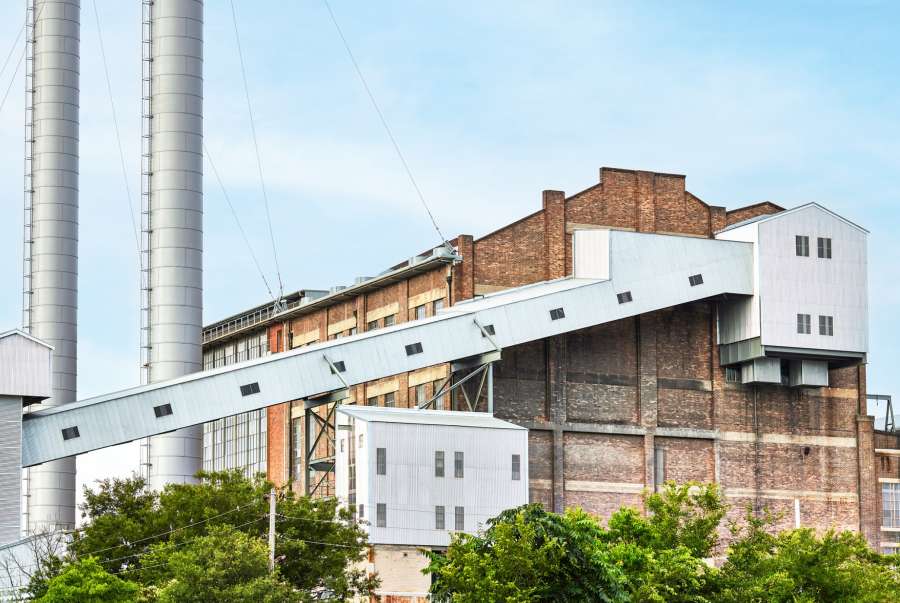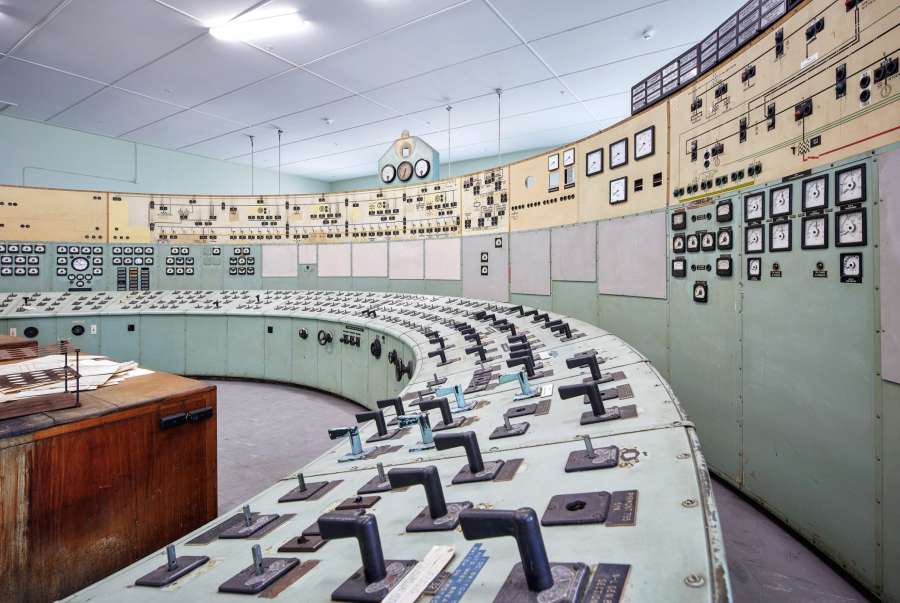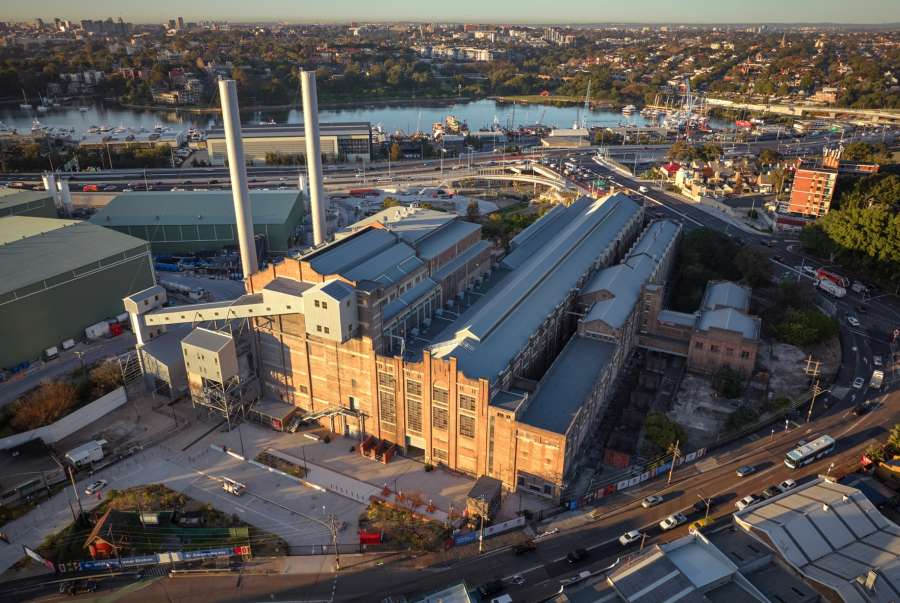Family Matters
Meet the families who don't just share surnames, they share career paths, values and a commitment to building something meaningful at FDC.
For the latest news and updates, subscribe to the MADE Newsletter
For Placemaking NSW CEO Anita Mitchell, the transformation of White Bay Power Station is more than just a story of heritage revival. It’s a testament to the strength of a true collaboration. A once-forgotten industrial relic not only reimagined as a public cultural icon, but delivered with the kind of care, creativity and commitment that, in Mitchell’s words, “you just don’t see every day.”
Delivered by FDC in 2024, White Bay Power Station is proof of what’s possible when trust, technical ingenuity and a whole lot of heart power a project from start to finish. One of the city’s longest-serving power stations, White Bay Power Station sat dormant for more than 40 years, a landmark both loved and loathed. Fast forward to today and it’s been reimagined for the public and brought to life in time for one of the city’s most significant arts events of 2024, the 24th Biennale of Sydney.
“FDC stood out because they didn’t treat this as just a contract,” Mitchell reflects. “They approached it as a partnership. You can’t price what you can’t see and this building was full of things you just couldn’t see until you got into it. The latent conditions risk was enormous, but they didn’t shy away from it. They leaned in.”
From day one, the stakes were high. “Long abandoned, the site had really been left to lie dormant and was at risk of further deterioration of its cultural value if it wasn’t restored,” Mitchell explains. “It was called an eyesore, a rave cave, an obstacle to the metro. But what we wanted was to restore it to public use, something like London’s Tate Modern, celebrating its industrial history while giving it back to the community.”

A Sleeping Giant Awakens
That vision, of a new cultural icon for Sydney’s Inner West, would demand more than just technical skill. “This was never going to be easy,” Mitchell says. “We had to preserve its industrial history but make it safe for modern public use. The easiest engineering solution isn’t always the most elegant. I think the quote was ‘as little as possible but as much as necessary.’”
Every corner of the project revealed hidden surprises: collapsing structures, hazardous materials, unexpected structural gaps. FDC’s team responded with innovation and unwavering respect for the building’s story. Mitchell recalls how even keeping the iconic twin chimneys standing required FDC’s signature inventiveness. With Sydney Metro tunnelling occurring just a short distance away, urgent structural intervention was needed.
“Part of the money was actually just to keep the chimneys from falling on the Metro construction site,” says Mitchell. “That's how at risk of falling they were because of the ground level of deterioration and rust. FDC won the project on the basis of their partnership mindset, but also due to some technical innovation that the team had brought to the table, around how to sensitively do some of the at-height work. In particular, for the repair of the chimneys, FDC devised a bespoke cradle structure, rather than building massive scaffolding which would have been very costly, a bit of an eyesore and quite a safety risk,” Mitchell explains. “It was a creative solution that reduced cost, improved safety and avoided turning the Sydney skyline into a forest of scaffolding.” The work contributed to FDC being awarded the 2024 Master Builders Association Award for Restoration/Adaptive Re-Use of an Historic Building: $50 Million to $100 Million.

High Stakes, Tight Deadlines
If the hidden challenges of the project weren’t enough, another curveball came right towards the end. With The Cutaway in Barangaroo unavailable to host the 24th Biennale of Sydney due to refurbishment, White Bay Power Station stepped in. Its debut as the home of one of Australia’s most significant cultural events came with a tight, immovable deadline. “It was like the opening for the Olympics,” Anita laughs. “The date doesn’t change. To enable safe public access in time, an additional $13 million in scope was added late in the program – works that were critical to ensuring the space could open as planned.”
A typical contractor might have balked. But for FDC, the building’s pull was too strong. “She really gets you,” Mitchell says, speaking of White Bay Power Station, like an old friend. “She wraps around your heart and pulls on your heartstrings because you just want her to be looked after. The FDC team didn’t just want to finish the job, they wanted this building to be open for the people of NSW. It would have broken our hearts to have to padlock her and walk away.”
The final weeks of the project were a blur of overlapping teams and round-the-clock coordination as construction and installation ran shoulder-to-shoulder. “We were pulling the plastic coating off the lifts two hours before the Biennale’s first guests arrived,” Mitchell laughs. “I often say we were lucky it was a leap year and we had an extra day in the calendar!”

A Cultural Icon
Since opening for the Biennale, more than 180,000 people have wandered through White Bay’s vast spaces, now alive with art, music, ideas and innovation, with less than a 9% vacancy rate in its first year. It’s hosted everything from the Sydney Youth Orchestra to Ministry of Sound’s Power Up and its versatility continues to draw filmmakers and major productions. What was once labelled a money pit is now one of Sydney’s most sought-after cultural spaces.
White Bay’s transformation has not gone unnoticed. The project’s sensitive design interventions, where the old and new meet with minimal visible change (“It doesn’t look any different. That was the entire point,” says Mitchell), have earned it prestigious recognition, including the National Trust Heritage Award. “It shows how important the building is for a National Trust perspective,” says Mitchell. Recently, White Bay Power Station also picked up the esteemed Greenway Award for Heritage, at the 2025 NSW Architecture Awards.
For Placemaking NSW, the project is more than a milestone, it’s a template for the power of place and partnership. “FDC treated us like proper project partners,” Mitchell reflects. “We shared a site shed, we commiserated together, we celebrated together. I’ve never seen a set of builders with bigger smiles than when we opened it to the public.”
For Mitchell, the success of White Bay Power Station comes down to more than just engineering solutions or project milestones, but a sense of connection to place. “We’re so proud of her. She captivates you. And she managed to captivate some hardened builders and get them to put not just their smarts, but their heart and soul into it,” she says. “The FDC team absolutely jumped on board, boots and all. We’d all fallen in love with the building. We really wanted it to be open to the people of NSW and to be enjoyed. We had the benefit of seeing it. We wanted everybody else to enjoy it as well.”
Celebrating 35 Years + Counting